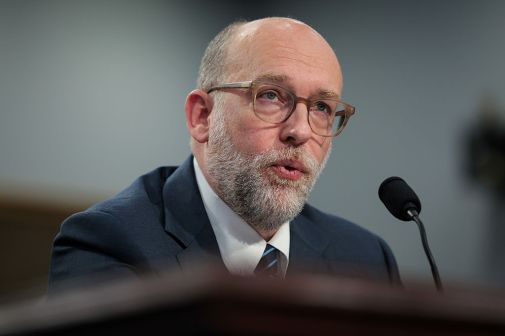Mary Davie sets broader vision for IT category management
When the administration moved toward category management — a platform meant to streamline how it procures products and services — the avenue for purchasing IT focused entirely on the software, hardware and mobile markets. But that may soon change, a General Services Administration official said.
“What we’re doing now is kind of backing up and saying, ‘Let’s look at the entire category of IT and where are the opportunities?'” Mary Davie, the IT category manager and assistant commissioner for the Office of Integrated Technology Services, said Tuesday at an event hosted by AFFIRM in Washington, D.C. “We’re really trying to understand how can government be a better buyer, a better customer? How can we work better together [with industry].”
Davie, who was appointed to fill in for Kim Luke as IT category manager in June when he stepped down, said the emphasis around software, hardware and mobile began long before the governmentwide push to category management — an acquisition philosophy that organizes products into broad categories, centralizing decision-making, and allowing a strategic and collaborative approach to purchasing across federal agencies.

Mary Davie (GSA)
“All these three teams were already going along in different ways, and then category management kind of comes along and frames out the IT category, which is about $50 billion in spend,” Davie said.
In addition to the software, hardware and mobile teams, the IT category also features subcategories around telecommunications, which includes mobile; IT consulting; IT security and IT outsourcing.
This more complete look at IT acquisition is an opportunity for Davie to align the category more closely with the policies and legislation, like the Federal IT Acquisition Reform Act, that drive the federal IT community, she said.
“I’ve got things like FITARA that I want to make sure that whatever we’re doing in category management is aligned to help the agencies meet the goals of FITARA,” Davie said. “I want to be aligned with the federal CIO and the administration’s priorities in IT. So we’re not sort of out there by ourselves. The good news is there’s a lot of work and interesting IT in government, so the alignment is good. It’s just looking then at the broader opportunities.”
To help her take on this larger swath of IT, Davie said she’s establishing an IT leadership group, currently working “to identify what agencies and agency representatives would be right for that group.”
The team would help with big questions like “How do we help govern the subcategories and decide what other things we would be tackling in the future, and all along setting goals and priorities, collecting data where we can, putting new agreements in place where it makes sense, or in some cases using existing governmentwide agreements and trying to work with agencies to help them move to those agreements where it makes sense,” Davie said.
The Office of Management and Budget’s Office of Federal Procurement Policy is also lending its help by launching dashboards to keep agencies in line with the extensive list of requirements it has levied on them in recent category management IT memos around software, hardware and mobile acquisition.
“There’s a lot of asks in there, and a lot of requirements of agencies, and a lot of requirements on the teams,” Davie said. “We cut a whole list of what all of those things are, who has to do what by when, and OMB is starting to dashboard that and track it. And it’s not just the compliance piece, but it’s looking at the spend … how much spend is going where, and why is it going there?”
Taking a step back, collecting data and developing a better understanding, she said, would be key to driving more efficient IT spend governmentwide.
“Having more information in the conversation has been really helpful so that we’re not just sort of going down this path that says we just want more prices and we just want more savings and things like that,” Davie said. “It really is just a better understanding of the way that people are buying things and why they’re doing the things they’re doing.”






